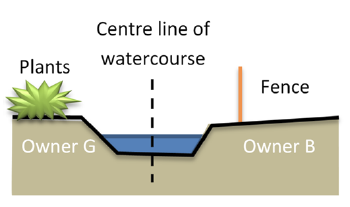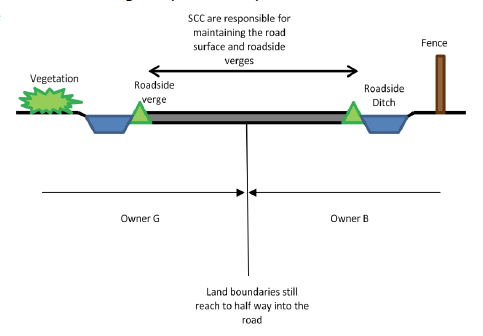What about if a stream runs underneath my property?
If a watercourse runs underneath your property or land in a culvert or pipe it is still your responsibility to keep it clear of debris and running freely. Underground culverted watercourses are more likely to occur in urban areas where historic development has taken place. It is important that you carry out regular maintenance, as if a culvert blocks it can causing flooding upstream for which you may be liable. There are many drainage companies that can inspect and clear culverts and offer you specialist advice on management.
If a culvert runs along the boundary of two landowner's land, they are jointly responsible for the culvert. Surrey County Council may be able to tell you if you have an underground watercourse on your land.
Can I just fill in the ditch if it is on my property?
No. These watercourses generally fulfil an important role in preventing local flooding. Plans for any works on ordinary watercourses, other than general cleaning and routine maintenance such as the removal of weeds or debris, must be approved by Surrey County Council. Consent for the work must be secured before starting. This applies to any changes which might affect the flow or capacity and include installation of dams, weirs, mills, channel diversions and in particular, culverting or piping.
How do I maintain the watercourse?
We have produced a guide called “Good Practice for Watercourse Maintenance” which tells you in detail all you need to know, but in summary maintenance should include; keeping vegetation under control (especially preventing large trees from blocking the watercourse), removing any obstructions to the flow of watercourse such as grass cuttings, litter and other debris and regularly removing silt to prevent it blocking the ditch, channel or pipe.
Other things to think about are:
Your own health and safety; working near water can be dangerous.
The watercourse may contain invasive species or protected wildlife which may require particular maintenance techniques or specialist advice.
Consent from the Environment Agency or the County Council may be required for any works other than general cleaning and routine maintenance, such as any change to the size or shape of the watercourse.
More information on these aspects is contained within the good practice guide.
What about the vegetation and wildlife in the watercourse?
Ditches can form very important habitats and may contain important species of flora and fauna that are protected or invasive species which are controlled under the Wildlife and Countryside Act 1981. The ‘Good Practice for Watercourse Maintenance’ document contains lots more information and links to advice.
Why is all this important?
Watercourses are designed to drain surface water away, this helps prevent flooding that puts property, roads, land and infrastructure at risk. If the system of ditches and culverts are maintained to a good standard, any flooding is likely to only affect areas in the floodplain. Not all watercourses transport water, as some act as storage areas, but maintenance of these is important too, as they prevent water collecting elsewhere.
The cost of maintaining a watercourse is minor compared to the cost from flood damage, not to mention the distress and inconvenience caused.
The above information can be downloaded as a PDF here
Where can I find out more?
Find out more about riparian ownership on GOV.UK.
https://www.gov.uk/government/publications/riverside-ownership-rights-and-responsibilities
You can contact the Parish Council for more local information too. Ideally send an email tp our clerk with your contact details and detailed query in the first instance.




